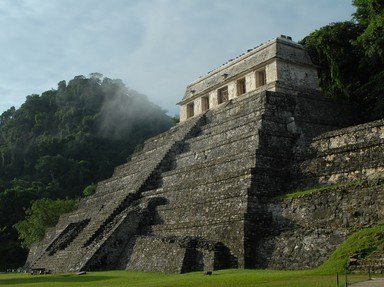Quiz Answer Key and Fun Facts
1. Workers at a Swedish nuclear plant were found to be contaminated with low level radiation, but no radiation leak was detected within the plant. The contamination ultimately turned out to have come from outside, even from a different country. From which one?
2. A radio station near a border was briefly occupied by insurgents from the neighboring country. They managed to broadcast a rebellious program for about four minutes before being driven off, one of their number remaining behind with lethal wounds. (Much later this incident was revealed to have been staged by the country that was allegedly attacked). Who apparently attacked whom in this insignificant border skirmish leading to a major war?
3. During the morning hours, a large airplane crashed into a skyscraper in New York. A fire broke out and all in the airplane, as well as several people in the building were killed. This description sounds like the "tip of the iceberg" unfolding into the horrible events of September 11, 2001, but in fact it can also refer to a much less catastrophic incident that occurred many years earlier. On what date did this news first make headlines?
4. In the midst of Christmas celebrations around the world, the news of a massive earthquake - magnitude 9.1 - striking a largely uninhabited area of the earth and causing little direct damage was at first of interest only to scientists. However, mere hours later a disaster of previously unknown proportions with over 200,000 dead and millions homeless unfolded on the television screens of the world. What caused this massive destruction of life and property?
5. One of the world's greatest disease outbreaks began almost unnoticed, when, on June 5, 1981, the Center for Disease Control recorded five cases of an unusual pneumonia among members of a certain subculture in Los Angeles. Which often fatal infection was this the first documented report of?
6. A bit further into the past, we heard news about a riot mob storming a prison, killing its director and liberating all of seven prisoners. Over the next 26 years from there, events evolved into the demise of a kingdom, several republics and an empire (the latter even twice), the killing of at least 170,000 people and, ultimately a restructuring of Europe. What was the name of that prison?
7. In another brutal mob attack, three men were thrown from a window about 17 meters (50 feet) above ground. Due to soft ground and thick clothing, all three survived with injuries light enough to allow them to get up and run away. This attack triggered a war that claimed several millions of lives with most of the dead however succumbing to epidemics instead of the direct consequences of warfare. In what century did this war take place?
8. Far into the past: A man and his followers flee a prospering city to escape religious persecution. Eight years later, however, they are able to return as conquerors and this time, they manage to claim the sacred building they intended to possess for their new religion, removing and destroying the 360 idols previously contained therein. What new religion were these men establishing?
9. During a televised press conference, a government speaker reads a brief announcement regarding changed border procedures. Asked at what time this would go in effect, he (erroneously) replies that he believes it takes effect immediately. This sets in motion a chain of events that ends 10 months and 23 days later with over two million citizens singing their national anthem in the streets of the same city. Which city was it?
10. Finally, let's look at a historic event involving a real iceberg: the sinking of the Titanic. At a length of 269 meters and a height of 53 meters, the ship's sides each measured over 10,000 square meters of metal of which almost 3,000 were under water. How much of this area was actually ripped open by the collision itself?
Source: Author
WesleyCrusher
This quiz was reviewed by FunTrivia editor
bloomsby before going online.
Any errors found in FunTrivia content are routinely corrected through our feedback system.

